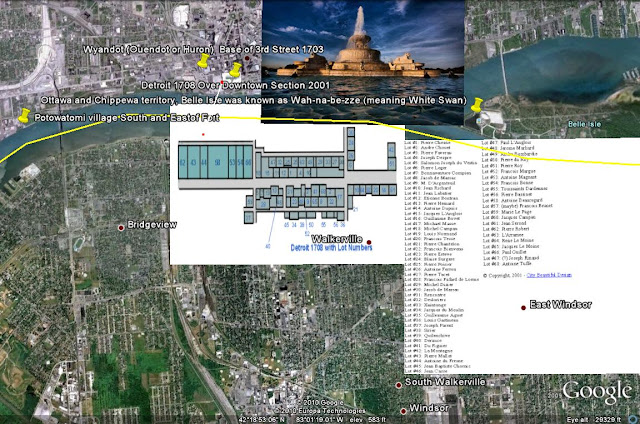FRENCHTOWN DIARIES: WAR OF 1812 IN MICHIGAN
Friends of the River Raisin Battlefield | www.riverraisinbattlefield.org
The Prophet’s Town was a small, but handsome village
of a couple hundred cabannes. It was equipped with a
large, central storehouse containing about 3,000 bushels
of corn and beans. One could have mistaken it for a
comfortable, sleepy haven of peace, were it not for the
furtive activity taking place throughout the night. i
Peter Navarre stirred groggily under his blanket. He
had been awakened by noises coming from outside his
shelter. The noises were made by native warriors pecking
sharp edges onto their gunflints.
As he began to throw off his covering, the low voice of
Jean-Baptiste Sanscrainte came to him out of the
darkness: “Be still,” Baptiste whispered, “if you value
your life.”
Navarre did as he was told, wondering just what was
going on. Hours seemed to pass as he waited and
reflected on the events which had brought them to this
hotbed of Native-American resistance.
It had all started when Sanscrainte invited him to join
his fur trading venture to the Prairie Potawatomies near
Chicago. After visiting several villages, they had acquired
only a small quantity of furs. When he complained about
their lack of success, Sanscrainte had assured him they do
better on their return trip to the Maumee. This is what
had brought them, after more than a month of travel, to
the Prophet’s town. Unfortunately, they arrived just as
General Harrison appeared with an American army.
So instead of trading, the village chiefs had spent most
of the previous day negotiating with General Harrison.
Tecumseh being absent at the time, leadership fell to the
Prophet. The Miami chief White Moon (White
Loon), and the Potawatomi chiefs Stone Eater, and
Winemac were all more in a mood to fight rather than
trade. Navarre and Sanscrainte, discouraged, had
retired early. ii
Village of Tippecanoe, Wabash River, 4:00AM, Nov. 7, 1811:
! It was an hour or more before dawn, when the noise of battle
came in through the stillness of the night. At first, Navarre and
Sanscrainte had strained to hear beneath the patter of a drizzling rain,
but gradually the sound of gunfire rose in volume as the battle peaked
at a point about 3 miles away from them.
! The two traders decided it would be best if the American soldiers
did not find them in the Indian village after the fighting, or they might
mistake them for renegades or British collaborators. So they quietly
packed up their belongings and left for home. iii
! The American army was not caught completely unawares.
General Harrison had ordered his men to sleep on their arms, and had
himself come out of his tent just minutes before the attack began. The
orderly musician was standing by, ready to give three taps of the
drum, the usual signal for the troops to get up and stand by their
arms. Ten minutes more, and the troops would be standing in line of
battle.
! Some of the soldiers were already up and throwing fresh wood on
the morning fires. Silhouetted against the flames, they made easy
targets. Realizing their exposure, the men made frantic efforts to
douse the fires, but to no avail. Those who tried were quickly picked
off by Indian sharpshooters.
" Although inexperienced, the troops responded to their officers’
commands to form and hold their lines, keeping up a heavy fire into the
dark shadows. Their muskets, loaded with buck and ball, were well
designed for this type of indiscriminate firing.iv As daylight broke over
the tree line, Indian pressure slackened. The 4th Regiment and a
detachment of dragoons mounted a charge. Giving 3 cheers, they
drove the Indians off into the adjoining swamps.
" 38 warriors were left dead in the field, and the troops found a few
more bodies when they advanced to search and destroy the Prophet’s
abandoned village. Harrison’s men lost 41 killed and 147 wounded, and
their line had been forced three times, but they had finally won the day
and delivered a heavy blow to the prestige of the Prophet. v
! In their search, the soldiers found a severely wounded Potawatomi
chief. Taken before Governor Harrison, the chief expressed regrets
for the attack and blamed the Prophet for misleading them.
" Harrison had the surgeon dress the Potawatomi’s wounds and left
him on the field of battle. He was given a message to deliver to the rest
of the Indians, urging them to abandon the Prophet and to agree to
the governor’s terms for peace.



